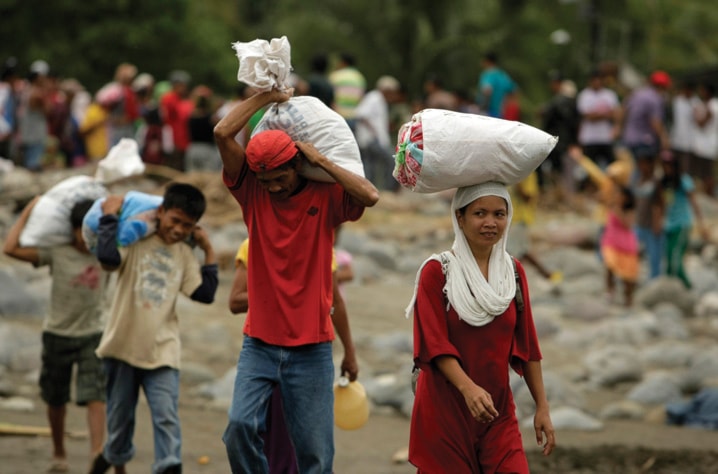MANILA, Philippines — The number of people who died in massive flash floods in the southern Mindanao region a week ago was smaller than earlier reported, Philippine disaster management officials said Tuesday.
Civil Defence chief Benito Ramos said that he has corrected an earlier death toll from the health department of nearly 1,500 to 1,249 based on an actual count of identified and unidentified bodies recovered by rescue workers.
He said the exact number of missing could no longer be determined but the search will continue.
Heavy rains overnight Monday over the eastern provinces of Mindanao have triggered floods and forced the evacuation of thousands of families, many by military helicopter, he said.
Most of the dead from last week’s floods were from the northern Mindanao coastal cities of Iligan and Cagayan de Oro where muddy water cascaded from nearby mountains and rampaging rivers, sweeping away nearly everything in their paths and leaving mangled bodies under thick layers of debris.
Ramos said decomposing remains were retrieved floating in the sea as far as 60 miles (100 kilometres) from the two cities where Tropical Storm Washi unleashed more than a month’s worth of rainfall in 12 hours starting late on Dec. 16, sending walls of water gushing into homes, Ramos said.
A passing low pressure area this weekend dumped rains over many areas in southern and central Philippines, prompting the evacuation of about 3,000 families from the Mindanao provinces of Surigao del Norte, Agusan del Sur and Dinagat on Monday and Tuesday, Ramos said.
Bukidnon province’s Polangui river breached its banks and swamped homes in Valencia city where more than 400 families from a flooded village were evacuated to temporary shelters Tuesday, said local army commander Lt. Col. Jose Ramon Cuerpo II.
Cuerpo said three military helicopters made several sorties to rescue 190 people who were trapped by rapidly rising flood waters with air force personnel using aerial ladders to haul them off to safety. He said there were no immediate reports of casualties.
The civil defence office also reported 275 people were evacuated in the township of Saint Bernard in central Southern Leyte province where a landslide wiped out one of its villages in 2006, killing over 1,000 people.
Ramos said fishermen have joined the search for bodies carried out to sea by last week’s floods.
Navy and coast guard divers were sent to find more bodies believed to be pinned down by logs scattered in the sea and along riverbanks, but Ramos said the operation had to be called off because the waters were too murky. “It’s useless to dive when you can see nothing,” he said.
He said search dogs were unable to help find new bodies among the debris.
“The dogs are confused (because) the smell of a dead person is almost the same as the smell of a dead water buffalo, cow, goat,” he said.
More than 60,000 homeless from hundreds of flood-ravaged villages spent a miserable Christmas in jam-packed schools and gymnasiums, while the United Nations launched an urgent appeal for $28 million to help the displaced — more than half the population of Cagayan de Oro and Iligan.
President Benigno Aquino III, who banned logging in February following previous flooding deaths that experts say were caused partly by deforestation and soil erosion, has ordered an investigation.
Another factor in the staggering death toll was illegal settlements along Cagayan rivers. Thousands of people lived in shanties on the banks and islands directly along the water’s path.
